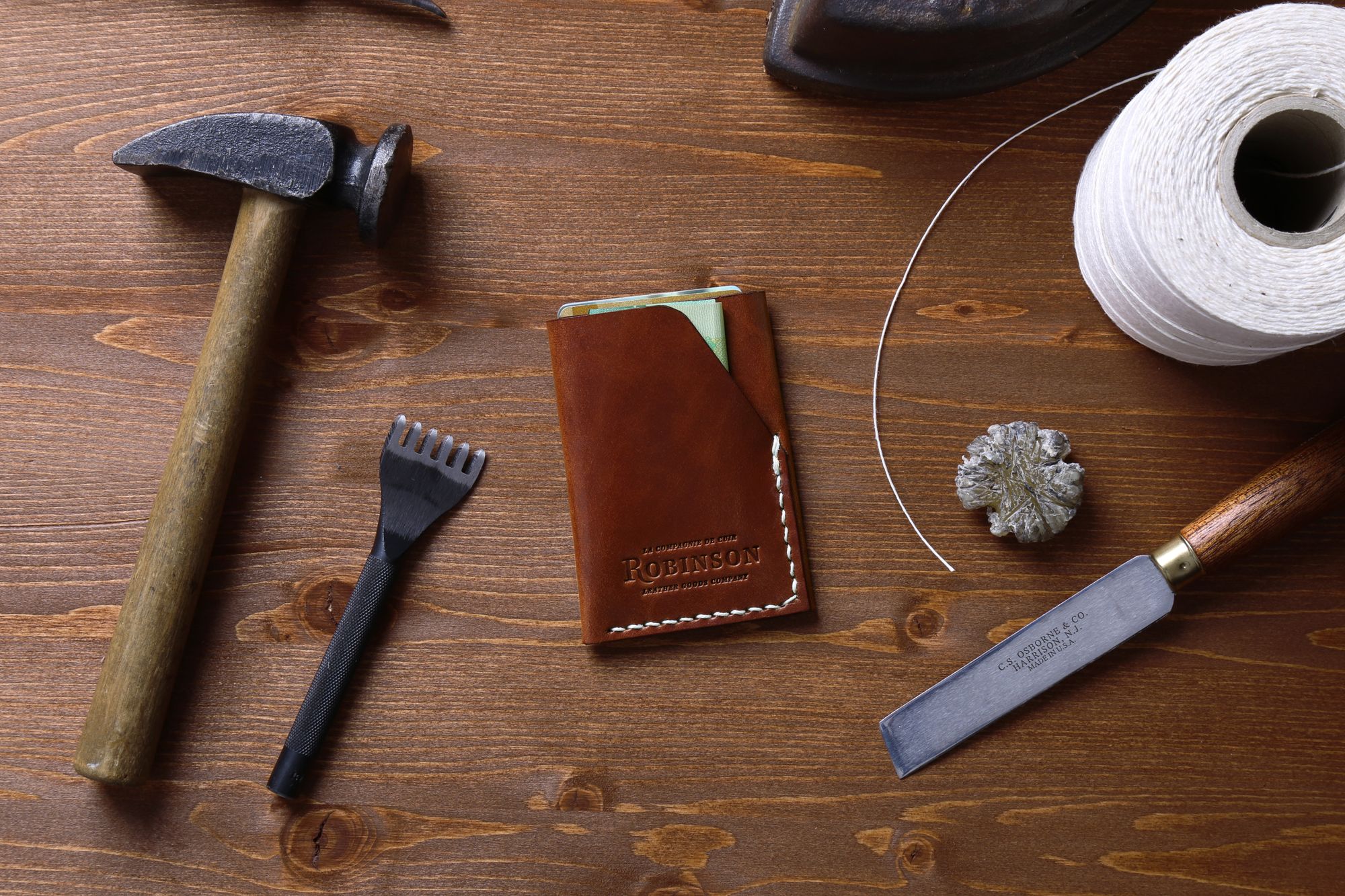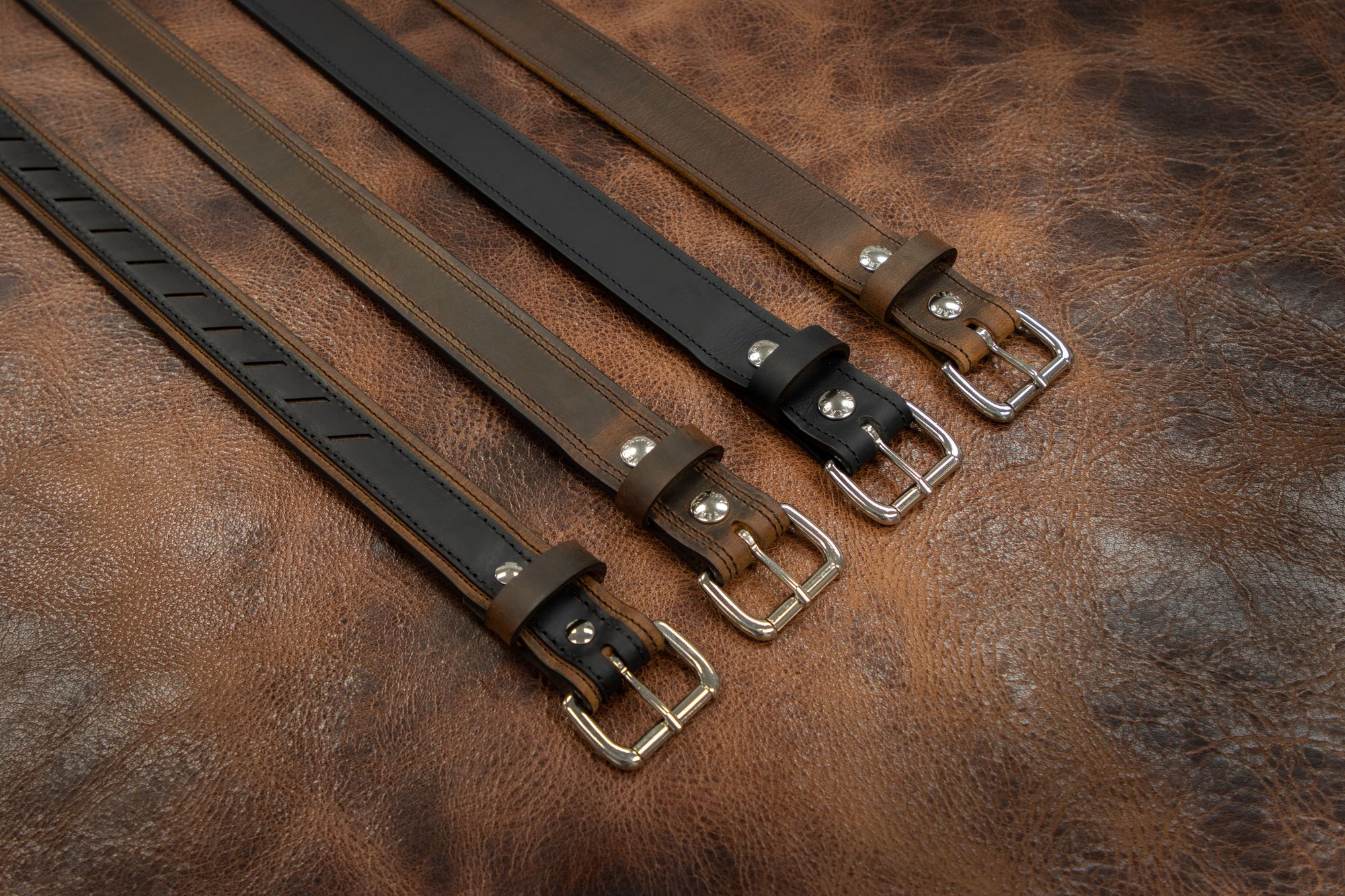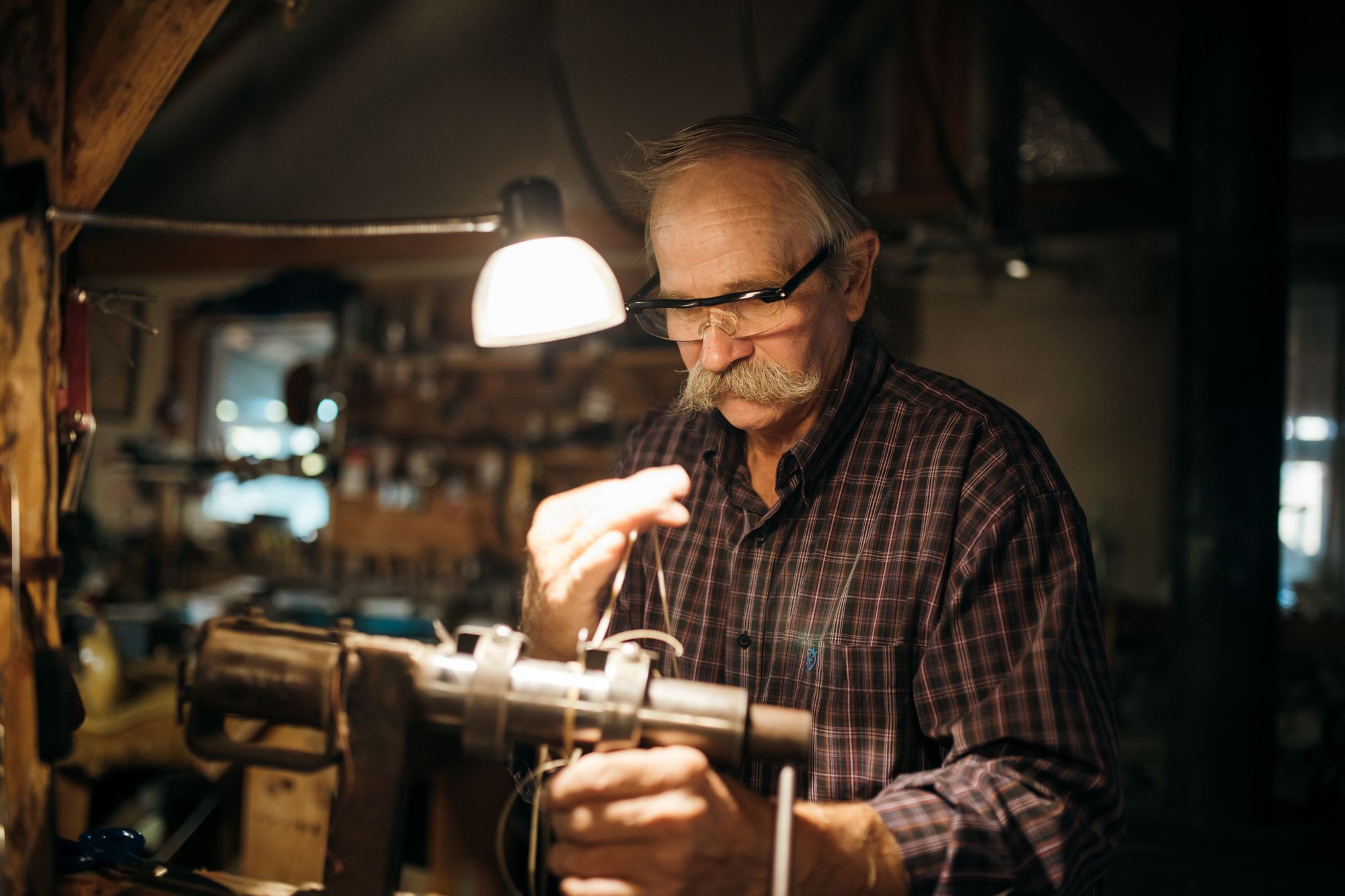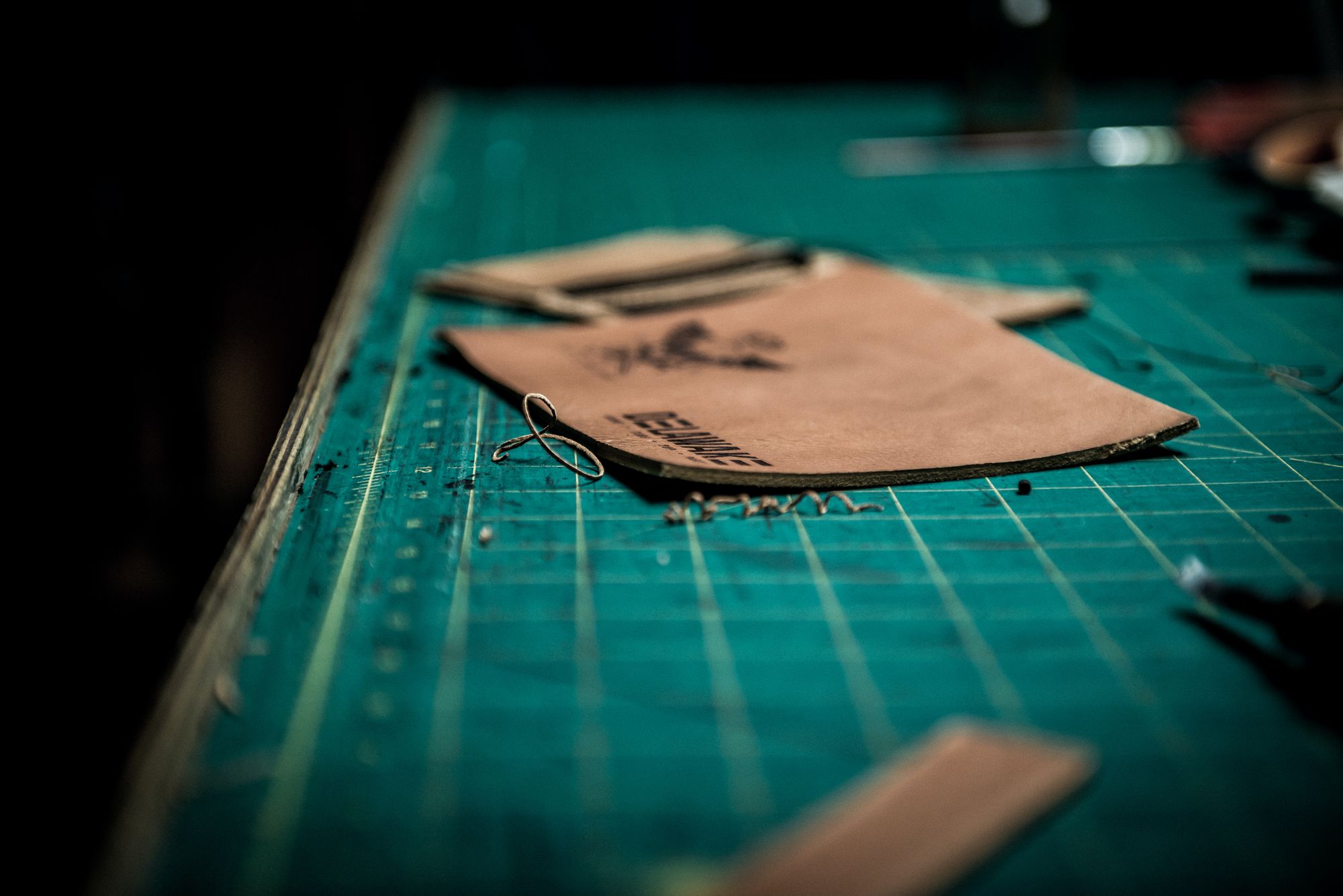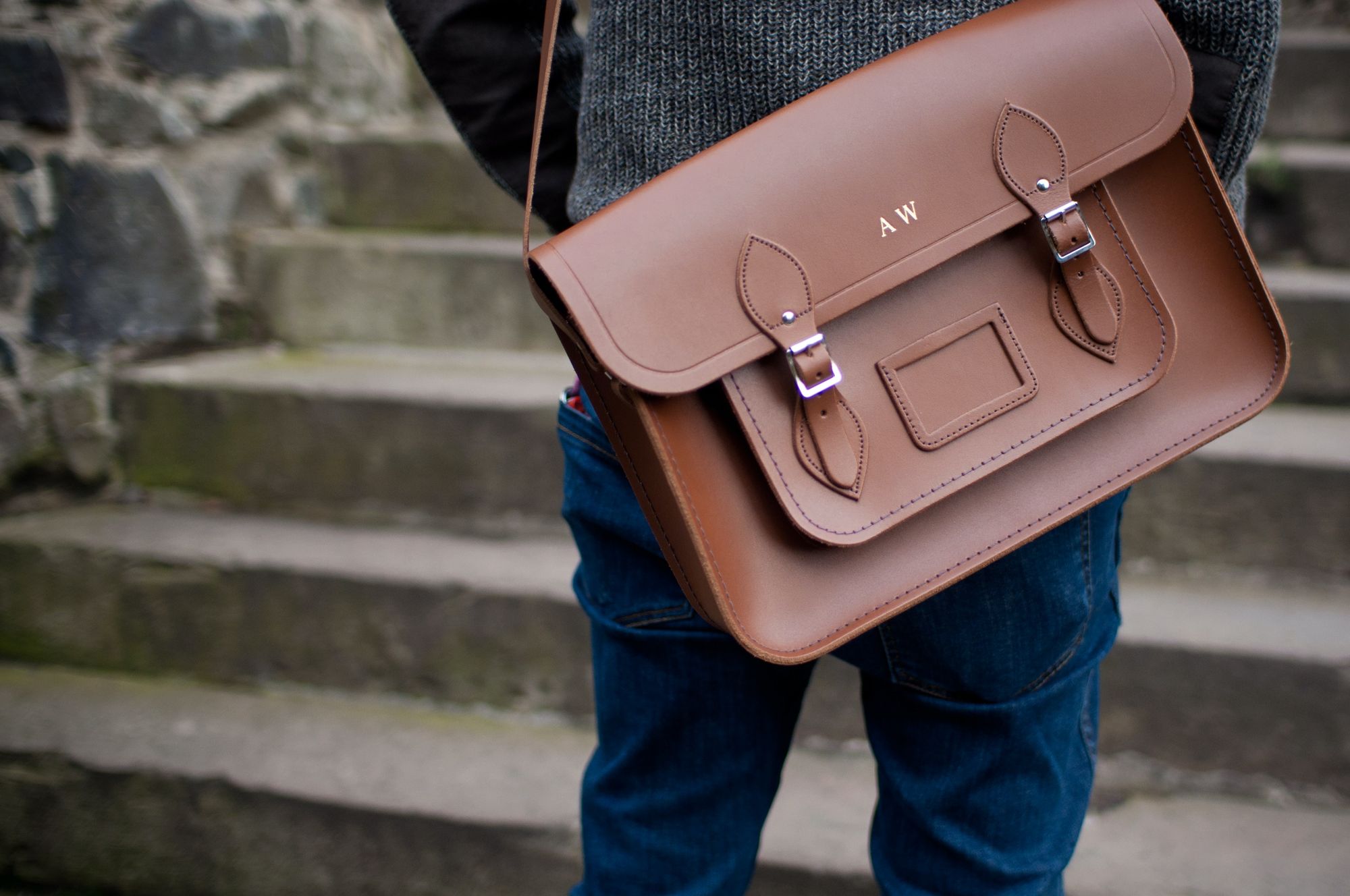Leather bags have always symbolized luxury, elegance, and style. The United States is one of the largest markets for leather bags, with a growing demand for high-quality and fashionable products.
The leather bag manufacturing industry has experienced significant growth in recent years, generating revenue of $19.8 billion in 2020, with a projected growth rate of 3.1% per year between 2021 and 2028.
Leather bags are one of the industry's most popular segments, accounting for a substantial portion of the revenue. With the rise of e-commerce and social media, manufacturers are under immense pressure to produce innovative designs that meet the needs and preferences of consumers.
Leather bag manufacturing is a complex process that involves multiple stages, including design, pattern making, cutting, sewing, and finishing. It requires skilled artisans with the expertise to create high-quality products that can withstand the test of time.
As the demand for leather bags continues to grow, manufacturers must stay up-to-date with the latest manufacturing techniques to maintain a competitive edge in the market.
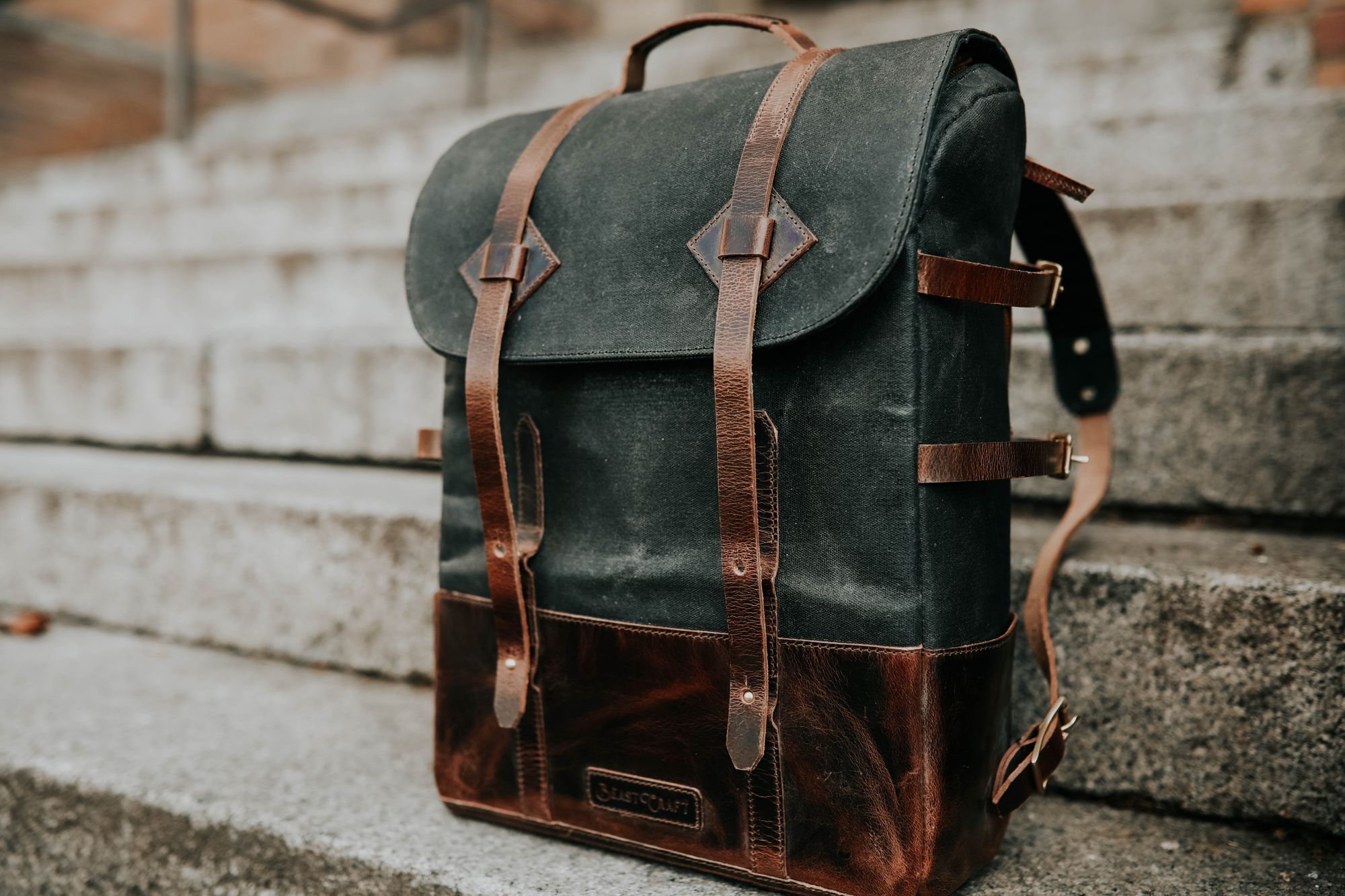
In this article, we will explore the different stages involved in leather bag manufacturing and discuss the latest trends and techniques used in the industry. We will provide insights into the various types of leather used in producing leather bags and their unique characteristics.
Here's what we shall cover in this post:
- Introduction to Leather Bags Manufacturing
- Common Types of Leather Bags
- Cutting and Stitching Techniques in Leather Bag Manufacturing
- Lining Materials and Techniques in Leather Bag Manufacturing
- Personalization and Customization of Leather Bags
- Quality Control and Inspection in Leather Bag Manufacturing
- Environmental Impact of Leather Bag Manufacturing
- Trends and Innovations in Leather Bag Manufacturing
- Conclusion
- Key Takeaways
Introduction to Leather Bags Manufacturing
Leather bags are one of the most popular and stylish fashion accessories worldwide. They are versatile and durable and add a touch of sophistication to any outfit. Leather bags can be used for work, travel, leisure, and even as statement pieces.
- The manufacturing process of leather bags involves multiple steps that ensure the production of high-quality and long-lasting bags. The process starts with designing the bag and selecting the appropriate leather for it. The leather is then cut and shaped according to the design using specialized tools and machinery.
- After the leather is cut, it is stitched together using various stitching techniques to create the bag's structure. The straps, zippers, and other hardware are also added at this stage. Once the bag is complete, it undergoes a final inspection to ensure that it meets the required quality standards.
- Leather bag manufacturing requires skilled craftsmanship and attention to detail. The process involves a combination of traditional techniques and modern machinery to create bags that are both functional and aesthetically pleasing. Ensuring that the leather used is of high quality and sourced responsibly is important.
- Leather bag manufacturing is a complex and time-consuming process that requires significant investment in machinery, tools, and materials. However, it can be a profitable business venture with the right skills and knowledge.
Types of Leather Used in Bag Making
Each type of leather has its own unique properties, such as durability, softness, and texture, which can affect the overall look and feel of the bag. By understanding the different types of leather available, you can make an informed decision when selecting a bag that is right for you.
- Cowhide Leather: This is the most common type of leather used in bag making. It is durable, strong, and relatively affordable. Cowhide leather is also easy to work with, making it a popular choice for manufacturers. It can be treated with a variety of finishes, including aniline, semi-aniline, and pigmented.
- Calfskin Leather: This type of leather is made from the skin of young calves. It is thinner and softer than cowhide leather, making it ideal for bags that require a more refined look. Due to its high quality and soft feel, calfskin leather is also used for luxury goods such as designer handbags.
- Suede Leather: Suede leather is made from the underside of the animal skin, giving it a soft, fuzzy texture. It is commonly used in bags that require a more casual, laid-back look. Suede leather can be prone to staining and water damage but can be treated with a protective spray to improve its durability.
- Full-grain Leather: Full-grain leather is made from the top layer of the animal skin, which is the strongest and most durable part. It is also the most expensive leather type due to its high quality and longevity. Full-grain leather can be left untreated or treated with a protective finish.
- Top-grain Leather: This type of leather is similar to full-grain leather but has been sanded or buffed to remove any imperfections. It is a high-quality leather that is less expensive than full-grain leather but still offers a durable and long-lasting material for bags.
- Patent Leather: Patent leather is a type of leather that has been coated with a glossy finish. It is commonly used in formal bags, such as clutches and evening bags, due to its high shine and eye-catching appearance.
- Exotic Leather: This includes leather made from non-traditional animal skins, such as alligators, ostrich, and snakes. These types of leather are more expensive than traditional leather but offer a unique look and texture for bags.
Common Types of Leather Bags
Leather bags are one of the most popular and timeless accessories in fashion. They come in a variety of styles, shapes, and sizes and can be made from different types of leather.
- Tote Bag: A tote bag is a large, spacious bag that is perfect for carrying a lot of items. It is usually made from sturdy leather and has two long handles. Tote bags can be used for work, school, or even as beach bags.
- Shoulder Bag: A shoulder bag is a medium-sized bag that is designed to be worn on the shoulder. It is usually made from soft, supple leather and has a single or double strap. Shoulder bags come in a variety of styles, including hobo, messenger, and saddlebags.
- Crossbody Bag: A crossbody bag is a small bag that is worn across the body. It is perfect for people who want to keep their hands free while they are out and about. Crossbody bags come in a variety of styles, including saddlebags, mini bags, and camera bags.
- Backpack: A backpack is a bag that is designed to be worn on the back. It is usually made from durable leather and has two straps that go over the shoulders. Backpacks come in a variety of styles, including rucksacks, messenger bags, and school bags.
- Clutch: A clutch is a small, elegant bag that is usually carried in hand. It is perfect for formal occasions, such as weddings or cocktail parties. Clutches can be made from a variety of leathers, including suede, patent leather, and embossed leather.
- Satchel: A satchel is a medium-sized bag that has a flap closure and a long, adjustable strap. It is perfect for people who need to carry their laptops or other large items. Satchels can be made from a variety of leathers, including cowhide, buffalo, and lamb.
- Duffel Bag: A duffel bag is a large, cylindrical bag that is perfect for travel or sports. It is usually made from sturdy leather and has two straps that can be carried by hand or over the shoulder. Duffel bags come in a variety of styles, including gym bags, weekender, and carry-on bags.
Bag Design and Pattern Making
Bag design and pattern making are essential steps in the process of creating a leather bag. These steps ensure that the final product meets the designer's and consumer's requirements and expectations.
- Purpose and Function: The first step in designing a leather bag is to determine its intended purpose and function. This will determine the bag's size, shape, and features. For example, a backpack for hiking will be different from a messenger bag for commuting to work.
- Materials: The next step is to select the materials for the bag. This includes choosing the type of leather, hardware, and lining. The quality of these materials will affect the bag's durability, functionality, and appearance.
- Sketching and Conceptualizing: Once the purpose, function, and materials have been determined, the designer will create sketches and conceptualize the bag's design. This includes considering the bag's proportions, pocket placements, and strap lengths.
- Pattern Making: Once the design is finalized, the next step is to create a pattern. This involves creating a blueprint of the bag's parts and panels that will be cut from the leather. The pattern must be accurate and scaled to ensure the bag is well-proportioned.
- Leather Cutting: The leather can be cut after the pattern is made. The pattern is laid onto the leather, and the outlines of each panel are traced onto the leather with a pen or chalk. Then, the leather can be cut using a sharp knife or leather cutting machine.
- Assembly: Once all the leather panels have been cut, they are assembled using sewing techniques such as saddle stitching, lock stitching, or machine stitching. The bag's lining and hardware are also attached during this stage.
- Finishing Touches: Finally, the bag is finished with any additional details or finishes, such as edge painting, burnishing, or adding logo plates. The bag is inspected for quality control before being packaged and shipped.
Cutting and Stitching Techniques in Leather Bag Manufacturing
To create a leather bag, it is crucial to have knowledge of cutting and stitching techniques. Here are some cutting and stitching techniques in leather bag manufacturing:
Cutting Techniques: Cutting is a crucial process in manufacturing leather bags. Here are some commonly used cutting techniques:
- Manual Cutting: Manual cutting involves cutting the leather by hand with a sharp blade. This technique requires skill and precision.
- Die Cutting: Die cutting is a process that involves using a die to cut the leather into a specific shape. This technique is more precise and efficient than manual cutting.
- Laser Cutting: Laser cutting is a modern technique that uses a laser to cut leather. This technique is more precise and can create intricate designs.
Stitching Techniques: Stitching is the process of sewing different pieces of leather together to create a bag. Here are some commonly used stitching techniques:
- Saddle Stitch: Saddle stitch is a traditional stitching technique that involves sewing two pieces of leather together with a needle and thread. This technique is strong and durable.
- Lock Stitch: Lock stitch is a stitching technique that involves sewing two pieces of leather together with a sewing machine. This technique is faster and more efficient than saddle stitch.
- Hand-stitching: Hand-stitching is a technique that involves sewing leather pieces together by hand. This technique requires skill and patience, but it creates a unique and durable look.
Edge Finishing Techniques: Edge finishing is the process of finishing the edges of the leather to prevent fraying and give it a polished look. Here are some commonly used edge-finishing techniques:
- Burnishing: Burnishing is a technique that involves rubbing the edge of the leather with a slicker to create a smooth and polished edge.
- Edge Paint: Edge painting is a technique that involves applying paint or dye to the edge of the leather to give it a finished look.
- Edge Beveling: Edge beveling is a technique that involves using a special tool to bevel the edge of the leather. This technique creates a clean and professional look.
Hardware and Accessories in Leather Bag Production
Hardware and accessories play a crucial role in enhancing the aesthetics and functionality of leather bags. They provide support and durability and add style and elegance to the overall design. Here are some of the commonly used hardware and accessories in leather bag production:
- Zippers: Zippers are one of the most important pieces of hardware used in leather bags. They are available in a wide range of colors and materials and are used to secure the main compartment, pockets, and other compartments. They can be made of brass, aluminum, or plastic and customized according to the design requirements.
- Buckles: Buckles are used to fastening straps and adjust the length of the bag. They are available in different shapes and sizes and can be made of metal, plastic, or leather. Some of the commonly used buckle styles include prong, center bar, and side release buckles.
- Rivets: Rivets are used to reinforce the areas of the bag that undergo stress and strain. They can be placed at the bag's corners, straps, and handles and are available in different shapes and sizes. They can be made of brass, nickel, or stainless steel.
- Handles: Handles are an essential part of a leather bag, providing comfort and ease of carrying. They can be made of leather, metal, or rope and can be attached to the bag using different techniques such as stitching, riveting, or braiding.
- Studs: Studs are used to add a decorative element to the bag. They can be placed on the flap or sides of the bag and are available in different shapes and sizes. They can be made of metal, plastic, or leather.
- D-rings: D-rings are used to attach accessories such as keychains and shoulder straps. They are available in different sizes and materials and can be placed at strategic points on the bag.
- Magnetic snaps: Magnetic snaps are used to provide a secure closure to the bag. They are easy to use and can be made of metal or plastic.
- Eyelets: Eyelets are used to reinforce the holes through which the straps or cords pass. They can be made of metal or plastic and customized to match the bag's design.
Lining Materials and Techniques in Leather Bag Manufacturing
Here are some factors to consider when it comes to lining materials and techniques in leather bag manufacturing:
- Material Selection: Manufacturers consider the bag's design and functionality when selecting lining material. Lining materials include cotton, nylon, polyester, suede, leather, and silk. Leather and suede are often used for high-end bags because of their durability and quality. Polyester and nylon are common in lower-end bags because they are more cost-effective.
- Thickness: The thickness of the lining material is important in ensuring the bag's durability and structure. Choosing a lining material that is sturdy enough to withstand the weight of the bag's contents is important.
- Color: The color of the lining material should complement the outer leather material of the bag. The lining color should also be practical, making it easier for the user to locate items inside the bag.
- Attachment Techniques: Different techniques exist for attaching the lining to the bag. Some manufacturers choose to stitch the lining directly onto the leather exterior. Others prefer to use glue to attach the lining, which is less time-consuming but may be less durable.
- Pocketing: Bags can be designed with pockets on the interior of the lining for organization and easy access. These pockets can be made of the same material as the lining or a different material for added texture and interest.
- Finishing: The lining can be finished with different techniques, such as piping, binding, or overlocking. Piping adds a decorative touch to the bag's interior, while binding and overlocking can provide additional durability to the edges of the lining material.
Finishing and Polishing Techniques for Leather Bags
Here are some of the commonly used finishing and polishing techniques in leather bag production:
- Burnishing: Burnishing is a technique used to create a glossy or polished look on the edges of the leather. It involves rubbing the edges with a burnishing tool and applying friction to create heat, which helps to seal the edges and create a smooth finish.
- Glazing: Glazing is a process of applying a finishing product to the surface of the leather to create a glossy or shiny appearance. This technique is achieved using a glazing machine or manually by rubbing the leather with a glazing tool.
- Waxing: Waxing is a process where a wax or wax-like product is applied to the leather surface to give it a polished look. It also helps to protect the leather from moisture and other elements that can cause damage.
- Buffing: Buffing is a process of rubbing the leather surface with a buffing machine or cloth to create a soft and smooth appearance. This technique is commonly used on suede and nubuck leather to create a velvety texture.
- Polishing: Polishing is a technique used to enhance the leather's natural shine and color. This is achieved by applying a special polish or cream to the leather surface and then buffing it with a soft cloth.
- Oiling: Oiling is the process of applying a conditioning oil or wax to the leather surface to keep it soft and supple. This technique is commonly used on leather bags exposed to harsh weather conditions or used frequently.
- Dyeing: Dyeing is a process of coloring the leather surface using a special dye. This technique can be used to create different colors and shades on the leather surface.
Personalization and Customization of Leather Bags
With the rise of customization and personalization in fashion, leather bag manufacturers are offering their customers the opportunity to create unique, one-of-a-kind bags. Here are some factors to consider in personalizing and customizing leather bags:
- Material Selection: One of the first steps in personalizing a leather bag is selecting the right type of leather. Different types of leather have varying levels of durability, texture, and appearance. Some popular choices include full-grain leather, top-grain leather, and suede.
- Bag Style and Design: Leather bags come in various styles, including totes, crossbody bags, backpacks, and clutches. Customization options can include adding pockets, zippers, or straps to create a bag that meets specific needs. Design options can range from simple embossed monograms to complex laser-cut patterns.
- Color and Finish: Color and finish options for leather bags are nearly endless. Popular finishes include glossy, matte, and distressed, while colors can range from classic black and brown to bright and bold shades. For a more personalized touch, some manufacturers offer the option to add custom color choices or even hand-painted designs.
- Hardware and Accessories: Hardware and accessories can make a big difference in the appearance and functionality of a leather bag. Personalization options can include adding unique buckles, clasps, and zippers or incorporating materials such as chain or braided leather for straps.
- Monogramming and Embossing: Monogramming or embossing initials, names, or logos onto a leather bag can create a personal touch. Embossing can be done in various ways, including hot stamping, debossing, or laser engraving.
- Handmade vs. Mass Produced: Some manufacturers offer handmade leather bags, which can offer a level of customization not found in mass-produced bags. Handmade bags may be more expensive, but they can provide a unique, personalized product.
- Collaboration: Working with a leather bag manufacturer to create a collaborative design can be an excellent way to personalize a bag. Manufacturers may offer design consultations and work with customers to create a bag that meets their specific needs.
Quality Control and Inspection in Leather Bag Manufacturing
Quality control is an important process that should be implemented at every stage of the manufacturing process to identify any defects or issues early on before they become bigger problems. Here are some key factors to consider when it comes to quality control and inspection in leather bag manufacturing:
- Raw Material Inspection: The first step in quality control is to inspect the raw materials, including leather, hardware, lining, and any other materials that will be used in the bag. The quality of the leather should be checked for any defects or blemishes, such as scars, stretch marks, or holes. The hardware should be checked for any rust, discoloration, or defects, and the lining should be checked for any tears or holes.
- Cutting and Stitching Inspection: Each piece of leather should be inspected for defects or inconsistencies during the cutting and stitching process. The stitching should be inspected to ensure that it is straight, even, and strong, with no loose or missing stitches. The edges of the leather should be inspected for any roughness or unevenness.
- Assembly Inspection: The bag should be inspected for any defects or issues during the assembly process. The seams should be inspected to ensure they are strong and even, and the hardware should be securely attached. The lining should be inspected to ensure it is properly attached and free from any defects.
- Final Inspection: Once the bag is complete, it should undergo a final inspection to ensure that it meets the required quality standards. The bag should be inspected for any defects, such as loose threads, scratches, or discoloration. The zippers, straps, and hardware should be tested to ensure they are working properly.
- Quality Assurance Testing: In addition to visual inspections, quality assurance testing can also be conducted to ensure the bag meets the required quality standards. This can include testing the bag for strength, durability, and water resistance.
- Documentation and Record Keeping: Finally, it is important to document and keep records of the quality control and inspection process. This includes keeping records of the materials used, any issues identified during the inspection process, and any corrective actions taken.
Packaging and Shipping of Leather Bags
Packaging and shipping of leather bags are important aspects of the production process that ensure the safety of the products during transportation. The following are some factors to consider when packaging and shipping leather bags:
- Proper packaging materials: The type of packaging materials used to ship leather bags should be sturdy and provide adequate protection against damage during transit. Common packaging materials include bubble wrap, cardboard boxes, and packing peanuts.
- Branding and labeling: Bags should be labeled with the appropriate brand name, model number, and other relevant details. Custom labels and hang tags can also be added to the bags to enhance branding and marketing.
- Shipping methods: Depending on the destination, shipping can be done by air, land, or sea. The choice of shipping method should be based on the cost, delivery time, and destination. It is also important to consider the weight and size of the leather bags when choosing a shipping method.
- Customs clearance: When shipping internationally, customs clearance is critical in ensuring that the bags are legally transported and delivered to the intended destination. The exporter should be aware of the customs regulations in the importing country to avoid any delays or complications.
- Insurance: Leather bags are valuable items and should be insured to protect against any damage or loss during transit. The exporter should ensure that the insurance policy covers the full value of the bags and the shipping costs.
- Environmental considerations: Sustainable packaging materials and shipping methods can be used to reduce the environmental impact of leather bag production and transportation. Biodegradable packaging materials and carbon offsetting can be used to minimize the carbon footprint of the shipping process.
- Quality control: Before packaging and shipping, the leather bags should undergo a thorough quality control check to ensure that they meet the required standards. Any defects or issues should be resolved before shipping to avoid any returns or negative customer feedback.
Environmental Impact of Leather Bag Manufacturing
Here are some of the ways in which leather bag manufacturing can affect the environment and some steps that can be taken to reduce this impact:
Water Pollution: One of the most significant environmental impacts of leather bag manufacturing is water pollution. The tanning process requires large amounts of water, and the chemicals used in the process can be toxic to aquatic life.
To reduce the impact, manufacturers can use alternative, less-toxic tanning methods, such as vegetable tanning, and implement proper waste management systems.
Air Pollution: Another environmental concern with leather bag manufacturing is air pollution. The tanning process releases toxic chemicals such as hydrogen sulfide, ammonia, and carbon dioxide, harming human health and the environment.
Manufacturers can use air pollution control technologies, such as scrubbers and filtration systems, to reduce this impact.
Waste Management: The leather bag manufacturing process generates a significant amount of waste, including leather scraps, chemicals, and wastewater. To reduce this impact, manufacturers can implement proper waste management practices, such as recycling and reuse programs for scrap leather and chemicals and proper wastewater disposal.
Deforestation: The leather industry is often associated with deforestation as the demand for leather drives the need for cattle grazing lands, destroying forests. To reduce this impact, manufacturers can use alternative leather sources, such as recycled or upcycled leather or use leather from more sustainable sources.
Energy Consumption: Leather bag manufacturing requires a significant amount of energy, primarily in the form of electricity and heat. To reduce this impact, manufacturers can use renewable energy sources such as solar or wind power or implement energy-efficient technologies in production.
Sustainable Leather Bag Manufacturing Practices
Sustainability has become critical in many industries, including leather bag manufacturing. With increased consumer awareness of the impact of manufacturing on the environment, more companies are adopting sustainable practices to reduce their carbon footprint.
Here are some sustainable leather bag manufacturing practices:
- Use of Eco-Friendly Materials: Companies can adopt sustainable leather bag manufacturing practices by using eco-friendly materials, such as vegetable-tanned leather, recycled leather, and organic cotton. Vegetable-tanned leather is tanned using natural materials, such as tree bark, rather than chemicals, making it biodegradable and eco-friendly.
- Reduction of Waste: Manufacturers can adopt sustainable practices by reducing waste in their production processes. They can do this by using leather offcuts for small leather goods such as keychains and cardholders, donating leftover materials to charity, or upcycling them for other products.
- Ethical Sourcing of Materials: Sustainable leather bag manufacturing practices involve ethical materials sourcing. This includes sourcing leather from suppliers who use sustainable and ethical practices in their farming and production processes.
- Use of Renewable Energy: Manufacturers can reduce their carbon footprint by using renewable energy sources in their production processes. This includes using solar, wind, or hydroelectric power to run their factories.
- Water Conservation: Leather production requires significant water, but manufacturers can adopt sustainable practices by conserving water in their processes. This includes reducing water usage during the tanning process, recycling wastewater, and using water-efficient machinery.
- Reduced Carbon Emissions: Manufacturers can reduce their carbon footprint by optimizing their transportation and logistics processes. This involves reducing shipping distances, using eco-friendly packaging, and minimizing the number of trips made by delivery vehicles.
- Supporting Local Communities: Sustainable leather bag manufacturing practices involve supporting local communities. This includes providing fair wages and safe working conditions for employees, sourcing materials from local suppliers, and giving back to the community through charitable donations or volunteer work.
- Product Durability: Sustainable leather bag manufacturing practices involve creating durable and long-lasting products. This reduces the need for consumers to purchase new bags frequently, reducing waste and the environmental impact of manufacturing.
Trends and Innovations in Leather Bag Manufacturing
Over time, the designs and styles of these bags have evolved to meet consumers' changing needs and preferences. In recent years, there has been a significant shift towards more sustainable and eco-friendly manufacturing practices and a focus on innovative design and technology.
- Smart technology: Incorporating smart technology into bags has become increasingly popular. Bags can now be designed with features like wireless charging, GPS tracking, and anti-theft sensors. These features provide a level of convenience and security that was not possible before.
- Customization: The customization of leather bags is becoming more popular. Many companies now offer the option to personalize bags with monograms or unique designs. This trend is appealing to consumers who want to make a statement and own something that is one-of-a-kind.
- Sustainable packaging: Sustainable packaging is another trend that is gaining momentum. Many companies are using eco-friendly packaging materials like recycled paper and biodegradable plastics. This reduces waste and reflects the company's commitment to sustainable practices.
- Innovative designs: Designers are always pushing the boundaries of creativity and innovation. Many companies now incorporate unique designs and materials to make their bags stand out. For example, some bags are now being made with innovative materials like wood or recycled plastics.
- Collaborations: Collaborations between designers and brands are also becoming more common. These collaborations allow designers to bring their unique vision to a brand and create something new and exciting. Collaborations also allow brands to reach new audiences and expand their product offerings.
- Digital marketing: Digital marketing has become an essential tool for leather bag manufacturers. Companies now use social media and other digital platforms to reach customers and showcase their products. This trend has led to increased online sales and a more significant presence in the global market.
How Deskera Can Assist You?
Deskera MRP allows you to closely monitor the manufacturing process. From the bill of materials to the production planning features, the solution helps you stay on top of your game and keep your company's competitive edge.

Deskera ERP and MRP system can help you:
- Manage production plans
- Maintain Bill of Materials
- Generate detailed reports
- Create a custom dashboard
Deskera ERP is a comprehensive system that allows you to maintain inventory, manage suppliers, and track supply chain activity in real-time, as well as streamline a variety of other corporate operations.
Deskera Books enables you to manage your accounts and finances more effectively. Maintain sound accounting practices by automating accounting operations such as billing, invoicing, and payment processing.
Deskera CRM is a strong solution that manages your sales and assists you in closing agreements quickly. It not only allows you to do critical duties such as lead generation via email, but it also provides you with a comprehensive view of your sales funnel.
Deskera People is a simple tool for taking control of your human resource management functions. The technology not only speeds up payroll processing but also allows you to manage all other activities such as overtime, benefits, bonuses, training programs, and much more. This is your chance to grow your business, increase earnings, and improve the efficiency of the entire production process.
Conclusion
Leather bag manufacturing is a complex and intricate process that requires careful attention to detail, creativity, and innovation. The process involves several steps, including designing, cutting, stitching, and finishing, each of which must be executed precisely to produce a high-quality, durable product.
The leather bag manufacturing process combines creativity, skill, and innovation. Designers must balance form and function to create products that meet the aesthetic and functional requirements of the customer, while manufacturers must carefully consider the type of leather, manufacturing process, and production timeline to ensure that the final product meets the desired specifications.
The industry is evolving to meet the growing demand for sustainable and eco-friendly products, focusing on simplicity, functionality, and durability.
By embracing new technologies and staying up-to-date with industry advancements, manufacturers can continue to produce innovative, high-quality leather bags that meet the needs of today's consumers.
Key Takeaways
- Leather bag manufacturing is a complex process that requires careful attention to detail, creativity, and innovation.
- The process involves several steps, including designing, cutting, stitching, and finishing, each of which must be executed precisely to produce a high-quality, durable product.
- Designing a leather bag involves a creative process incorporating various elements, including functionality, aesthetics, and ergonomics.
- Manufacturers must consider the type of leather to be used, the intended use of the bag, and the preferences of the target market to create a product that meets the needs and desires of the customer.
- Cutting and stitching are critical steps in the manufacturing process that require skill and attention to detail.
- The leather must be cut precisely to ensure the pieces fit together seamlessly, and the stitching must be done carefully to ensure the bag is strong and durable.
- Finishing the bag involves several processes, including polishing, coloring, and adding hardware, all of which contribute to the final product's quality and appearance.
- The finishing process is a critical stage in manufacturing, as it can significantly impact the bag's durability and longevity.
- Sustainable and eco-friendly manufacturing processes are becoming increasingly important in the leather industry, with manufacturers exploring innovative techniques to reduce waste, minimize the use of harmful chemicals, and decrease energy consumption.
- Personalization and customization are growing trends in the leather bag industry, with manufacturers incorporating technologies such as laser engraving and embossing to create unique designs and allow customers to personalize their bags.
Related Articles
